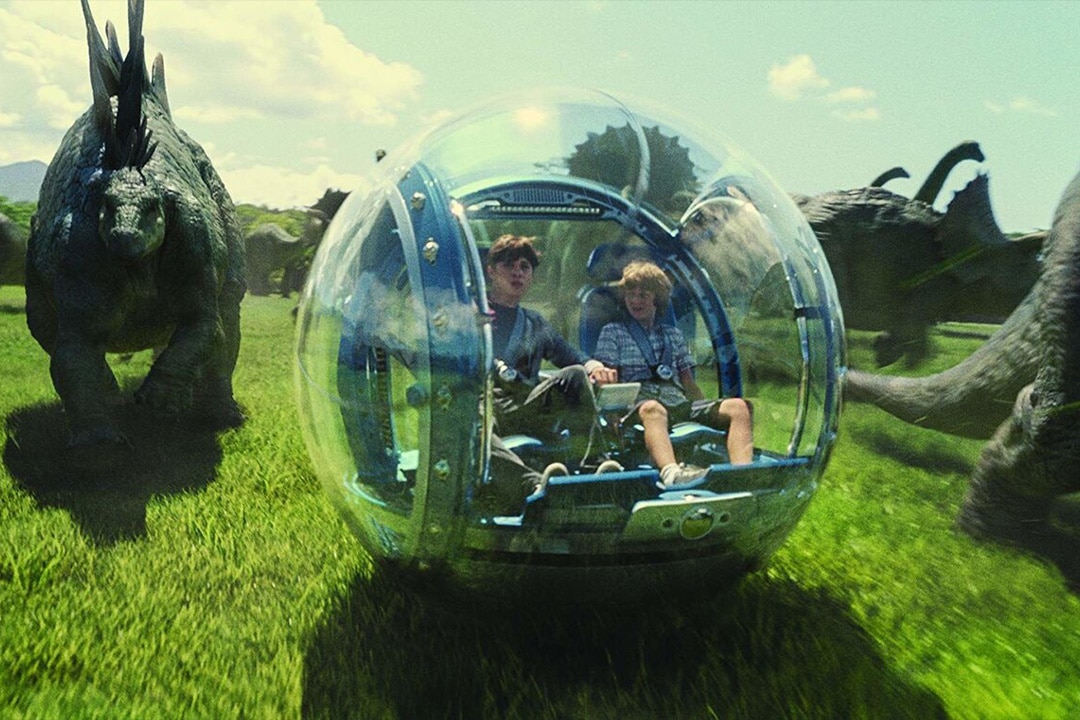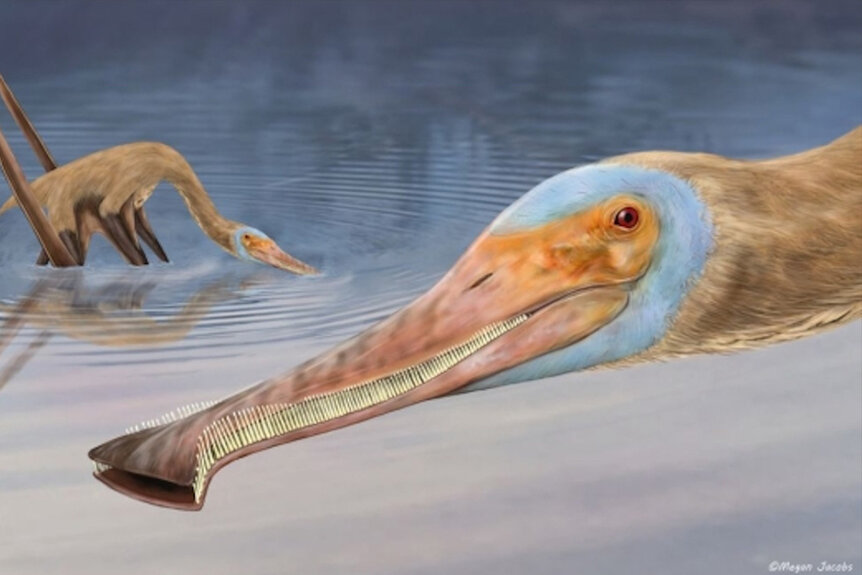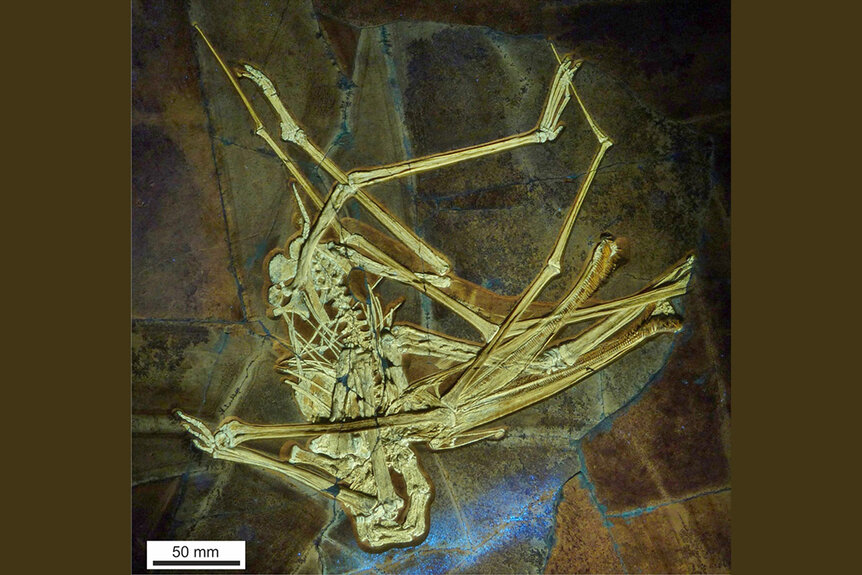Create a free profile to get unlimited access to exclusive videos, sweepstakes, and more!
Newly discovered pterosaurs with almost 500 teeth filter-fed like flying Jurassic whales
Jurassic World would have loved these!

When Jurassic Park welcomed its first visitors in 1993, they were operating under the influence of a deadly amount of hubris. The fervent belief that we could engineer our way into a foolproof dinosaur park ended up being the park’s undoing. In Jurassic World (now streaming on Peacock), the park’s new purveyors appear to have learned from the mistakes of the past just in time to make entirely new, but equally deadly, ones.
The initial villain in Jurassic World isn’t the dinosaurs, but humanity’s ability to get used to just about anything. By this point in the story, the park has been operating successfully for some time and people have become bored with ordinary dinosaurs. In an effort to boost ticket sales, the park’s genetic engineers create a new species in the Indominus Rex, an animal literally tailor made to kill.
The truth is, if Jurassic World really did exist, they wouldn’t need to invent new species because new discoveries are happening all the time! The latest new exhibit in our ideal Jurassic World is of a bizarre little filter-feeding pterosaur called Balaenognathus maeuseri. That’s according to a new study published in the journal Paläontologische Zeitschrift.
RELATED: Were dinosaurs way smarter than we previously thought?
The specimen was discovered in a quarry in the northern part of Bavaria. A team of local paleontologists were collecting fossils in a thin layer of plated limestone that is particularly good at preserving fossils. They were digging out some crocodile remains when they realized they had broken through a nearby pterosaur fossil. Luckily, they were able to recover the broken pieces and painstakingly put them back together. The result is an almost entirely complete specimen, missing only a couple of small bones. That’s when David Martill, retired professor at the School of Environment, Geography and Geosciences at the University of Portsmouth, heard about the animal.
He was visiting friend and co-author Helmut Tischlinger when he saw photos of the fossil under an oath of secrecy, and told the animal would be described in due course. A couple of years later, Martill got a phone call and an invitation to join the team describing the animal. As fate would have it, Martill retired last Friday, the day before their paper was published, but you wouldn’t know it from looking at his calendar. Between interviews, he also found time to give a university lecture on the first Monday of his retirement. He even made a deal with the university to keep his office and use of the equipment. He’s a sort of paleontological phantom haunting the campus and describing newly discovered extinct species. We should all enjoy such a retirement.
Balaenognathus maeuseri, the animal he and his colleagues described, has a wingspan a little over a meter, putting it on par with modern mallard ducks. Martill noted that because we’ve only found one of them, it isn’t yet clear if it is a juvenile or an adult, or if it is representative of the species as a whole. Some of those answers may be revealed through additional research while others might require the discovery of additional specimens. The circumstances of its death are also something of a mystery.
“How come such a light animal – bones filled with air – how come it died and sank straight to the bottom of the sea? It should have floated, but it sank for some reason and it must have gotten buried really quickly. Or else it landed somewhere that was very stagnant and anoxic. There’s no hint anything else was there at all, this thing is perfectly preserved,” Martill told SYFY WIRE.
RELATED: 'Nope,' 'Jurassic World,' and more: The best sci-fi movies streaming on Peacock
In addition to its incredible preservation, the specimen is unique in the unusual teeth jutting out between its jaws. The team counted 480 individual teeth, each of which are incredibly slender, and they note that there are probably some obscured teeth, likely putting the total number closer to 500. While there are other pterosaur species with a high number of slender teeth, many of these also had hook-shaped protrusions at the end. The hooks at the end of the teeth appear to be unique among pterosaurs and might even be unique among vertebrates. Researchers have searched high and low for another animal with similar teeth and have come up more or less empty handed. The closest thing they’ve been able to find are the jigsaw puzzle teeth of crabeater seals and, of course, the filter feeding teeth of baleen whales.
“The sheer number of the teeth in our animal and the arrangement of them with very fine gaps between them hints very strongly at it being a filter feeder,” Martill said.
The triangle shape of the jaw funnels water toward the back and the mouth is open at the front, where the animal has no teeth. When it closes its jaw, it basically has a water scoop with filtering teeth along the sides. As long as water gets into the funnel, all you need is some way of pushing the water out over the teeth so you can trap any food particles inside. That’s precisely what B. maeuseri did. When it pressed its jaw closed and blocked its throat, water would get pushed out the sides through teeth and all the little shrimp and water fleas would get trapped on the pterosaur’s hooked teeth. The structure of its mouth allows paleontologists to speculate about how these animals may have fed.
“How does it get the water with all the food particles to come into the funnel? It could be paddling along like a duck or wading like other birds. I suppose, if it’s a good enough flier, it could even perhaps skim feed. There aren’t many birds that skim feed because there are a lot of issues. You have to reinforce the neck and make sure your angle is right so you don’t snap your jaw off,” Martill said. “It could also be passive. Imagine that it stands at a tidal flat at low tide. As the tide drains out there’s quite a flow of creeks. All it would need to do is stand in the creek with its head upstream and in comes the water. When the tide turns, you just stand and face the other way.”
RELATED: Universal Orlando opens first-ever escape room with 'Back to the Future' & 'Jurassic World' themes
Despite being technically retired, Martill hopes to extract one of the teeth from their specimen and examine it in the university's electron microscope, which they have promised he can still use. Such an examination could reveal more about the structure of the hooks and the layers of enamel making up the teeth.
By the end of the age of dinosaurs, pterosaurs had all lost their teeth and transitioned to more beak-like mouths, but a few tens of millions of years earlier, during the Jurassic, pterosaurs adapted just about every kind of teeth you can imagine. And their diversity of forms could fill an entire wing of our own dinosaur theme park. These ones might be right at home in a park pond, right beside ducks and flamingos.
Until then, get your fill of prehistoric theme park madness in Jurassic World, now streaming on Peacock!




























